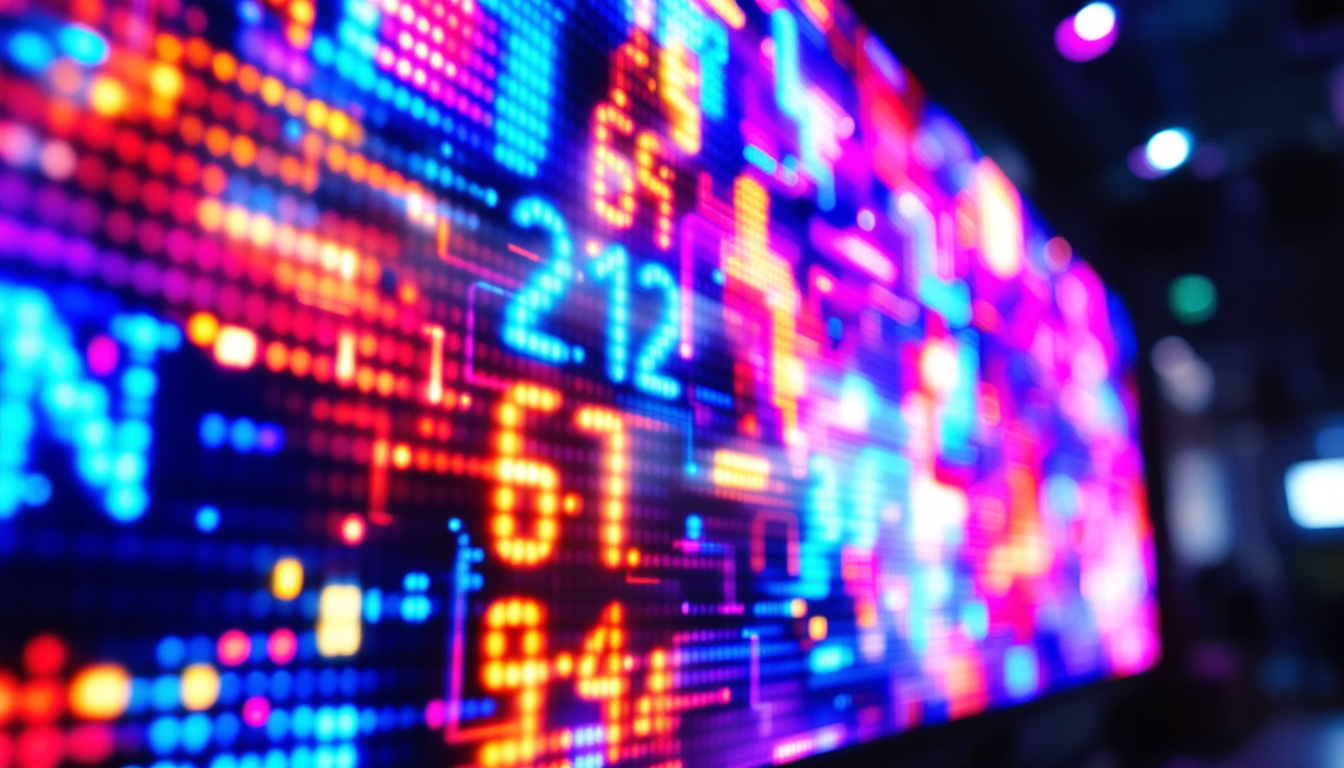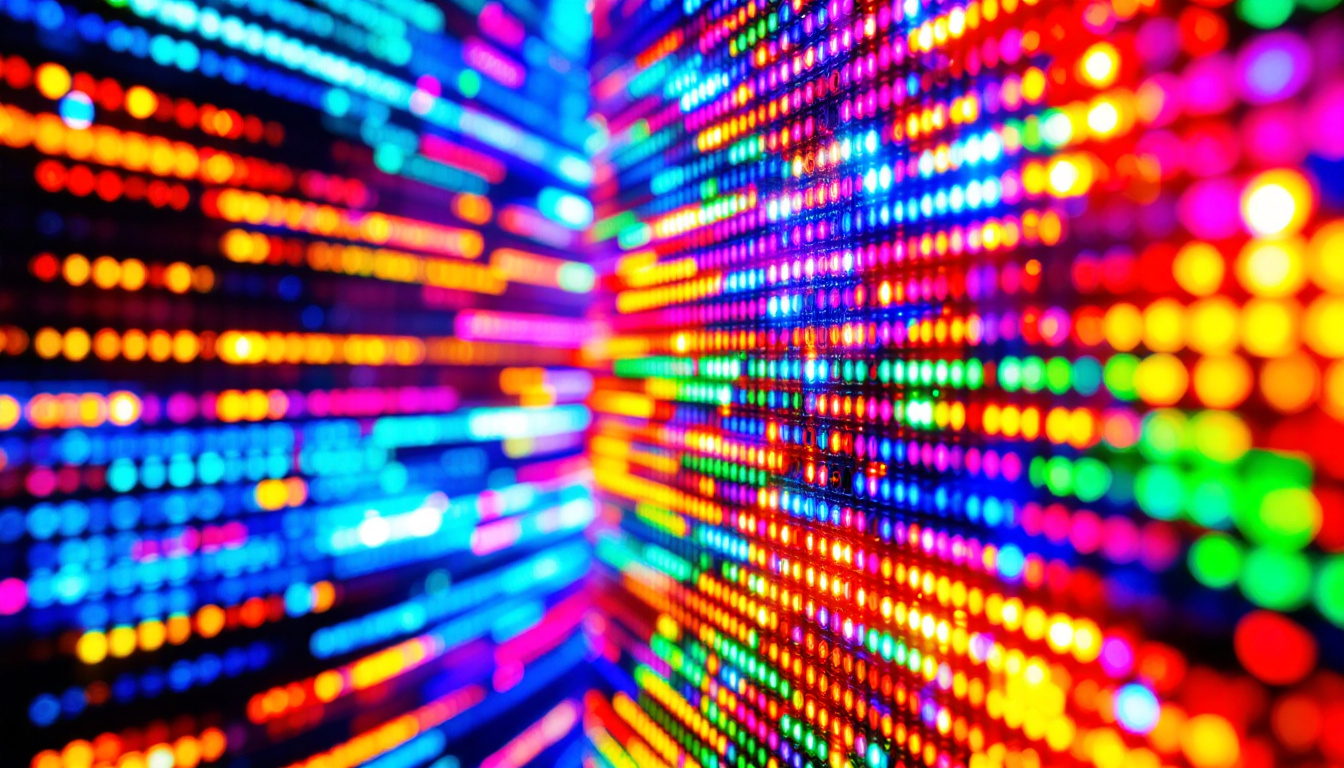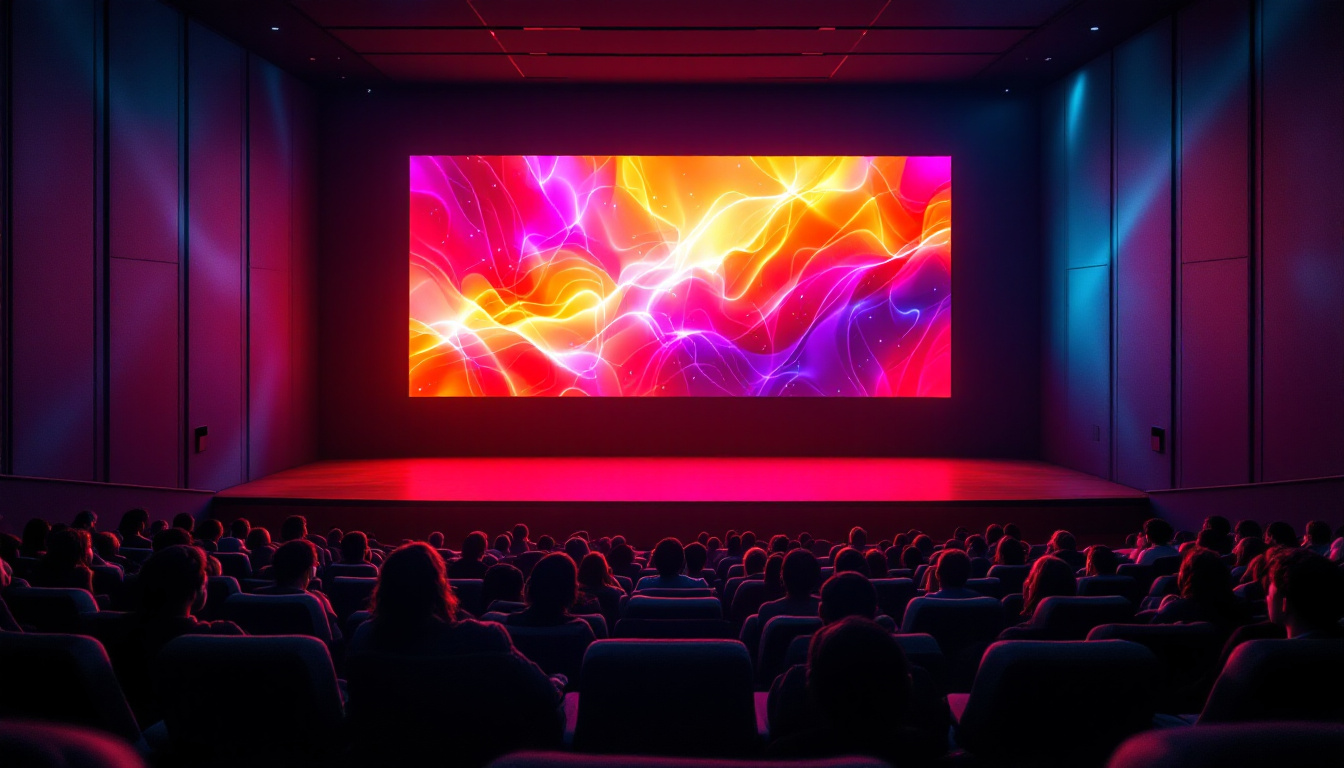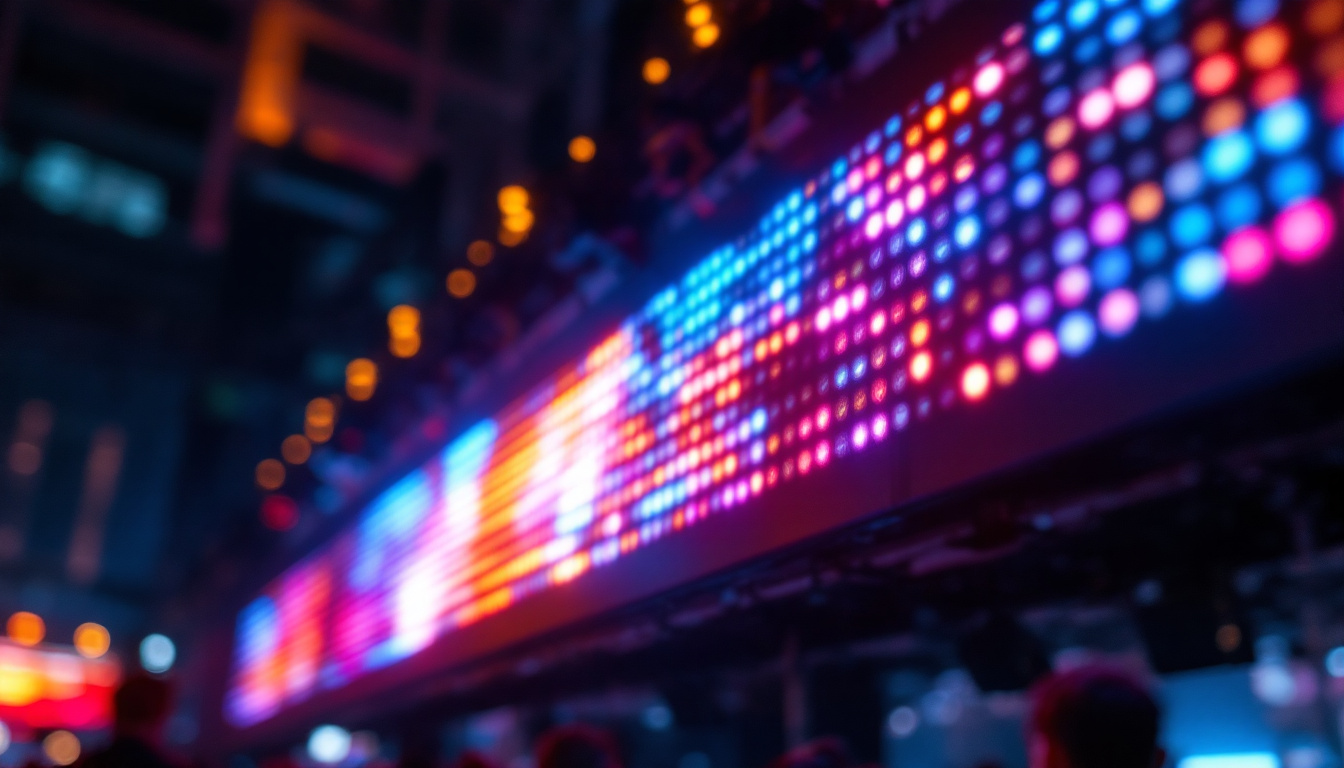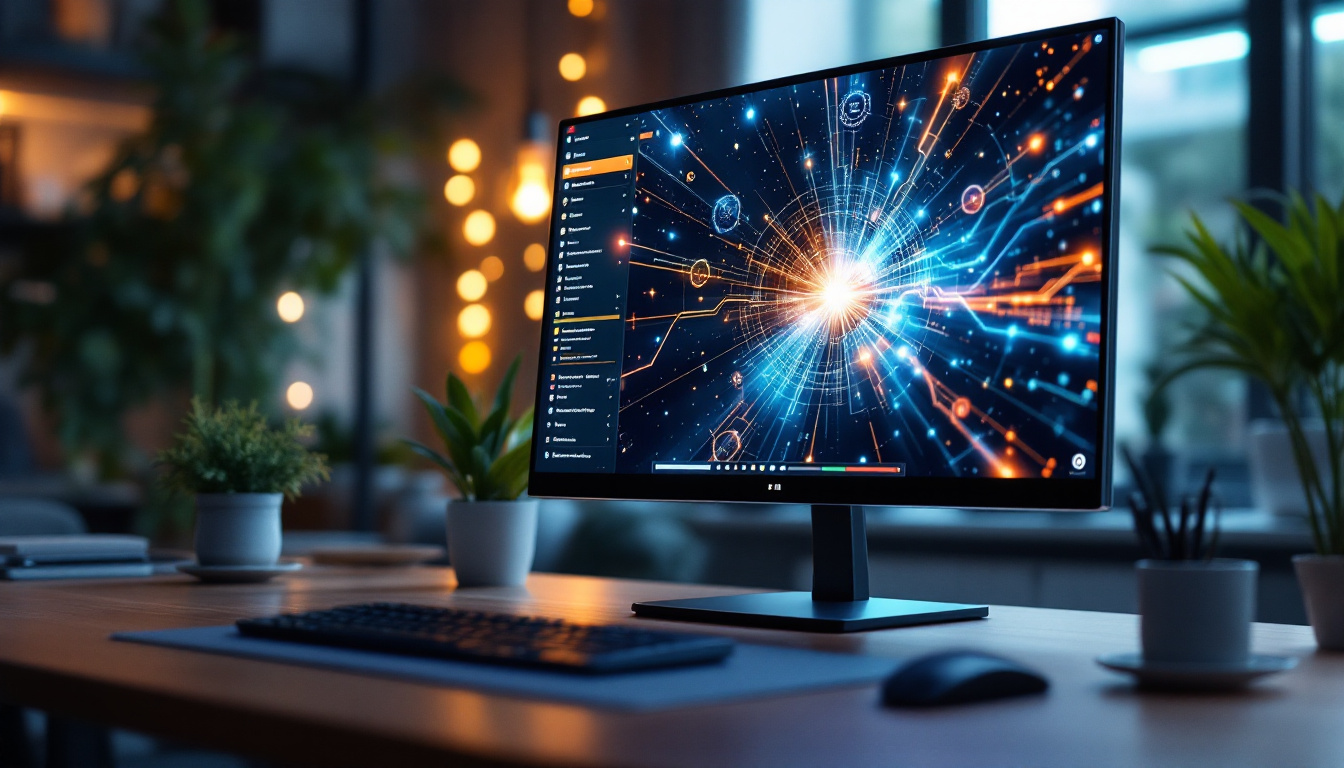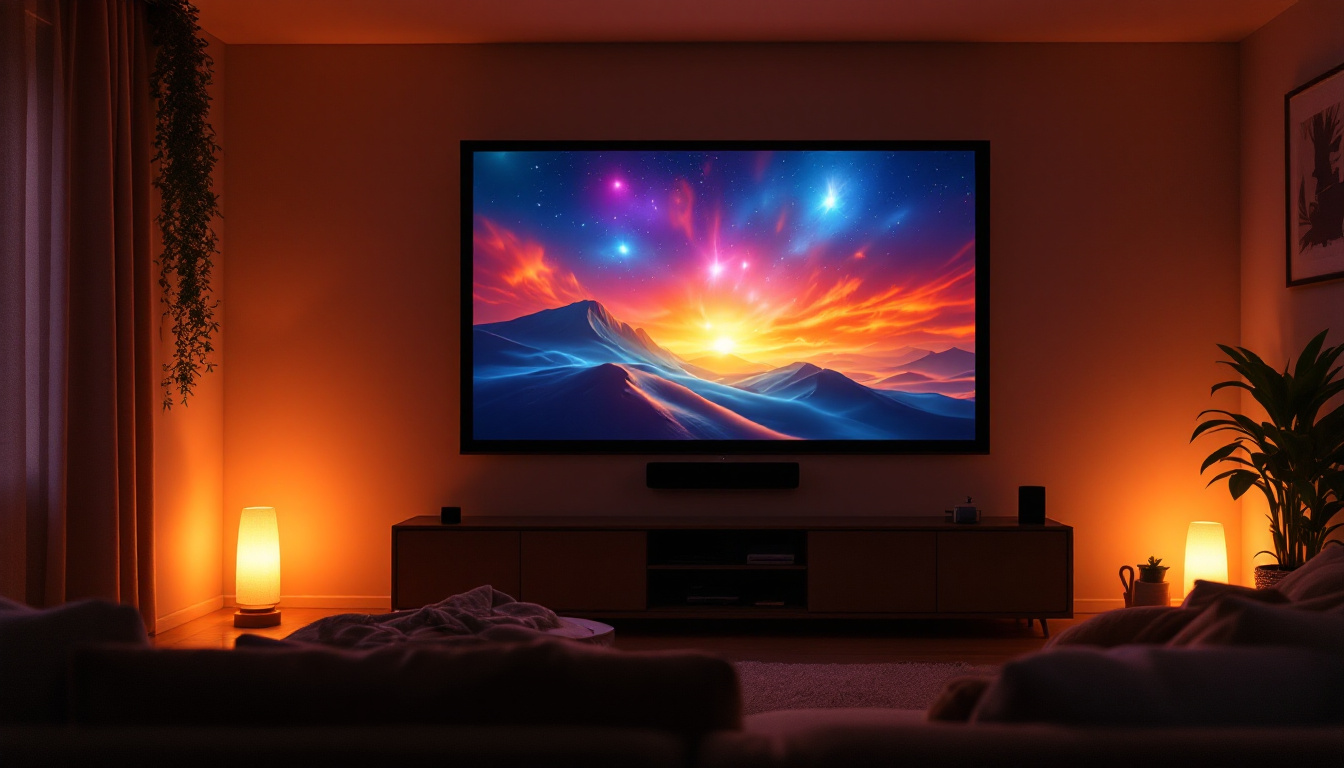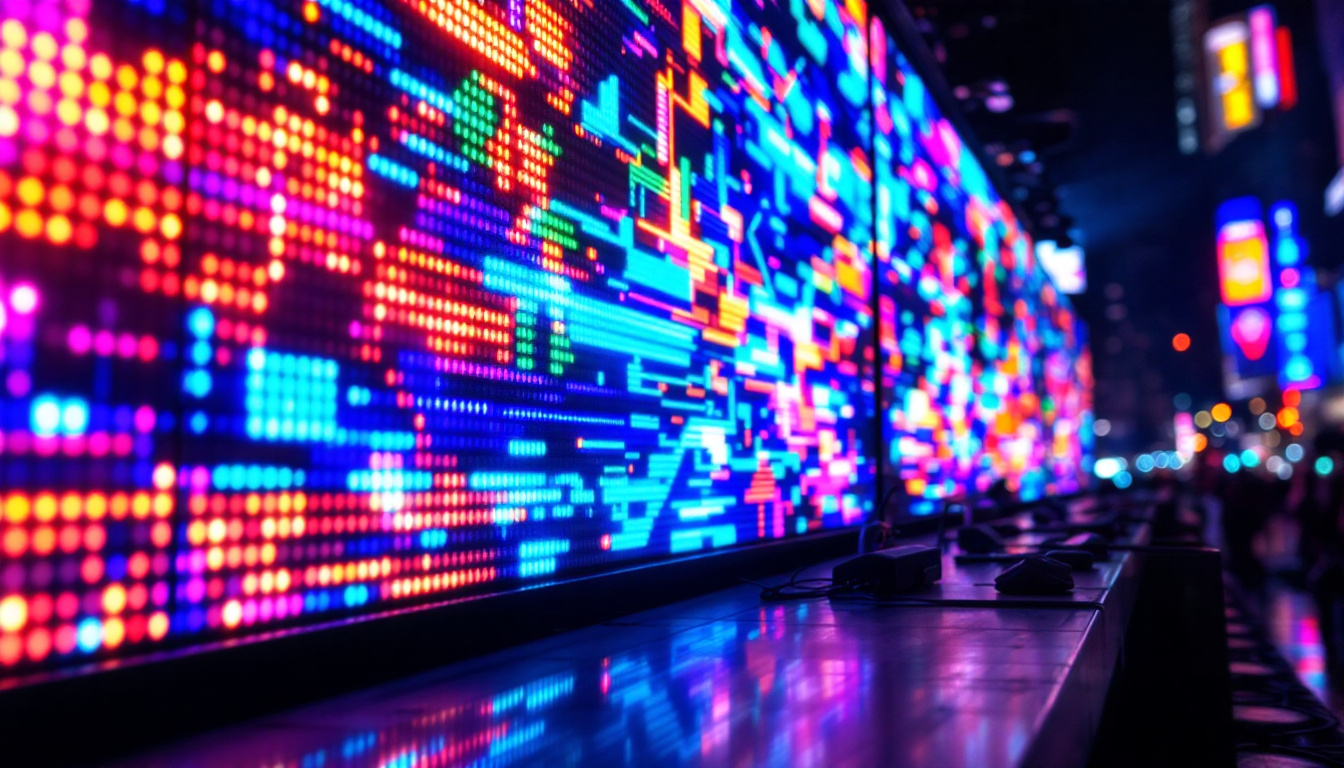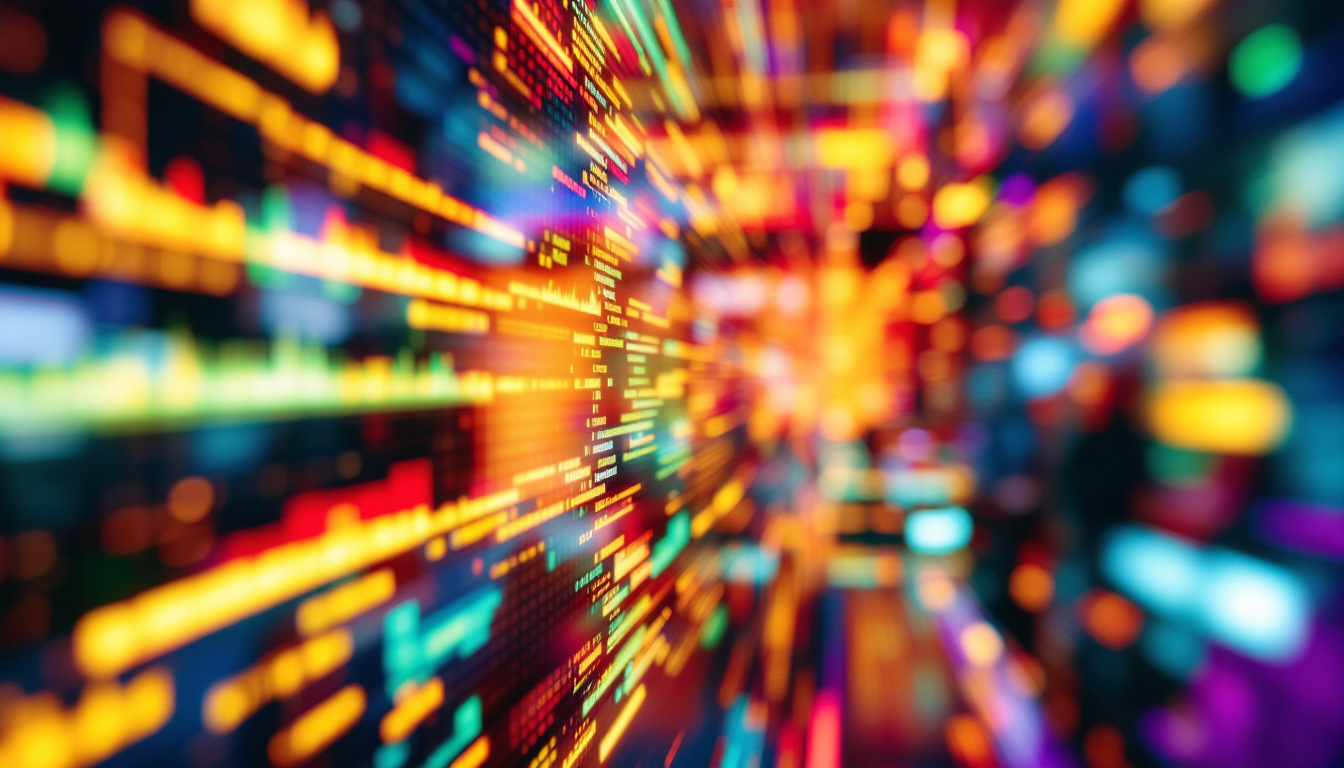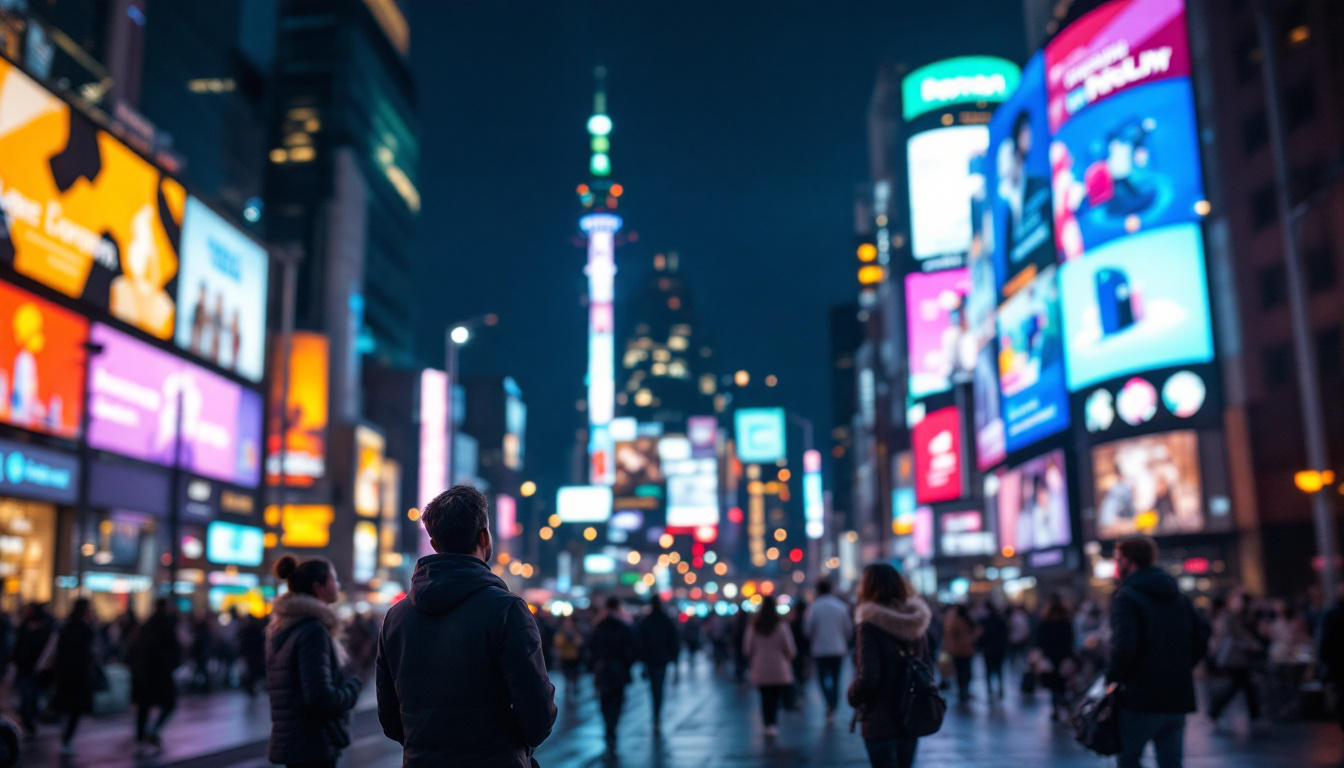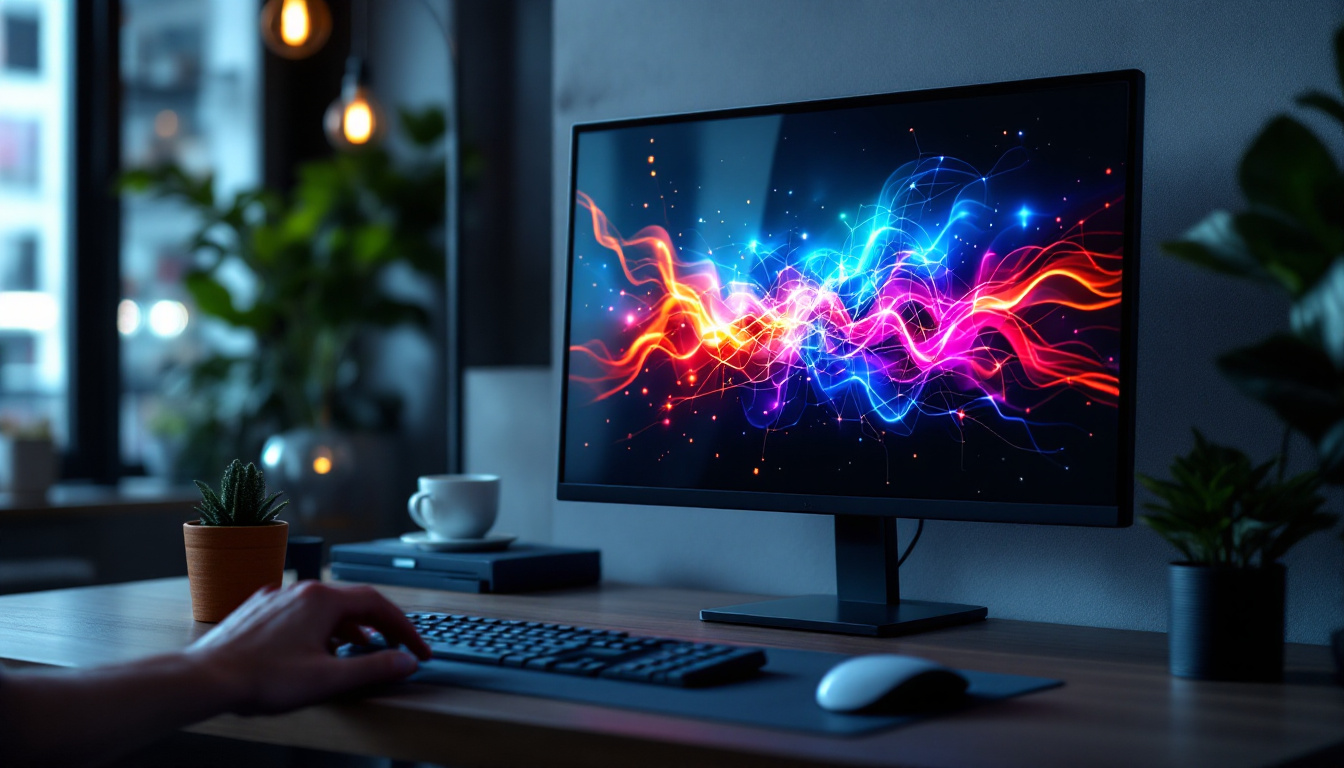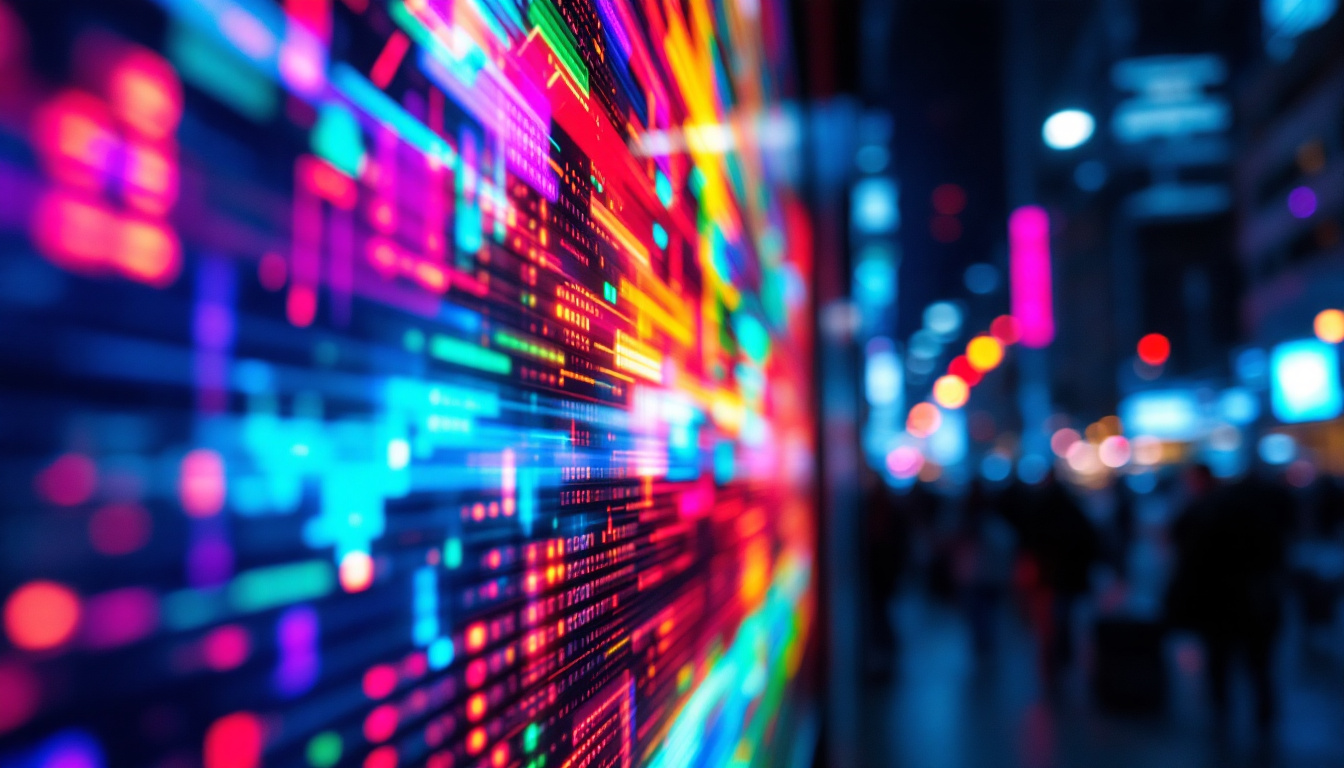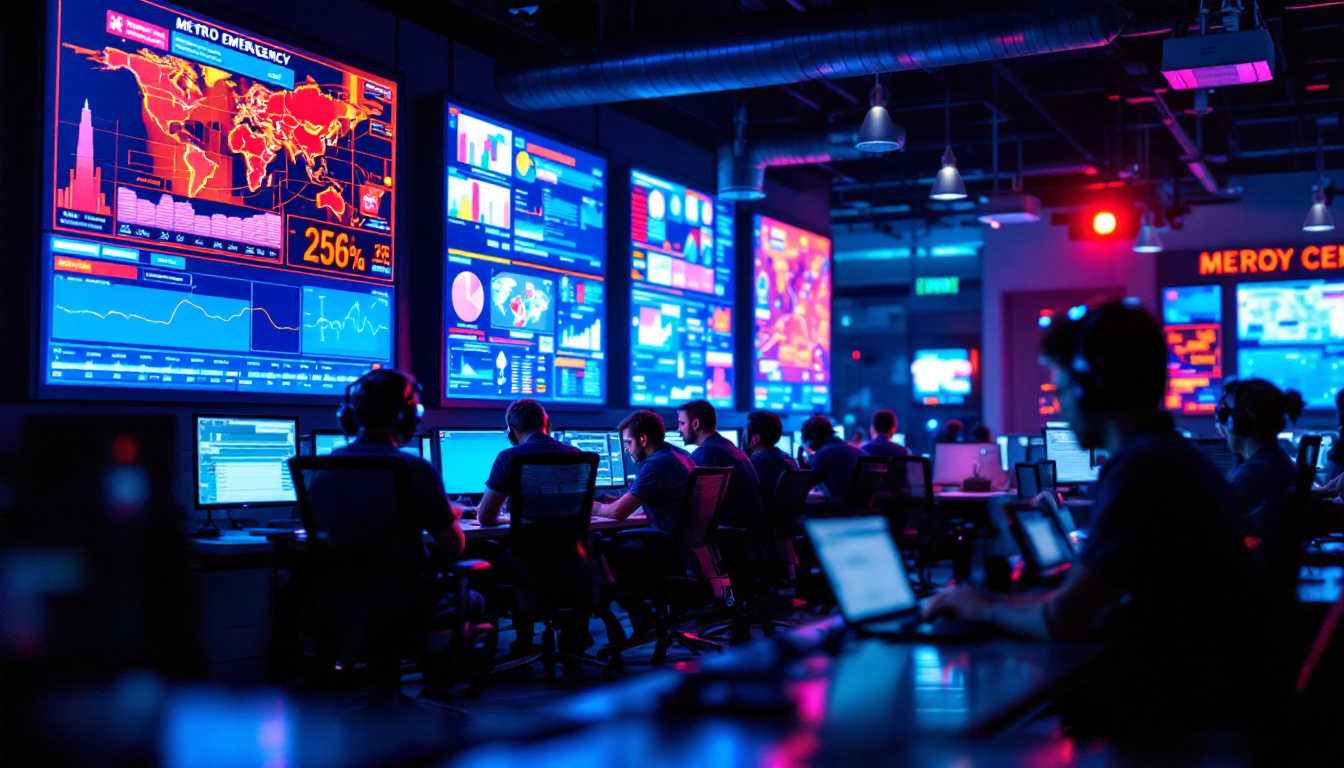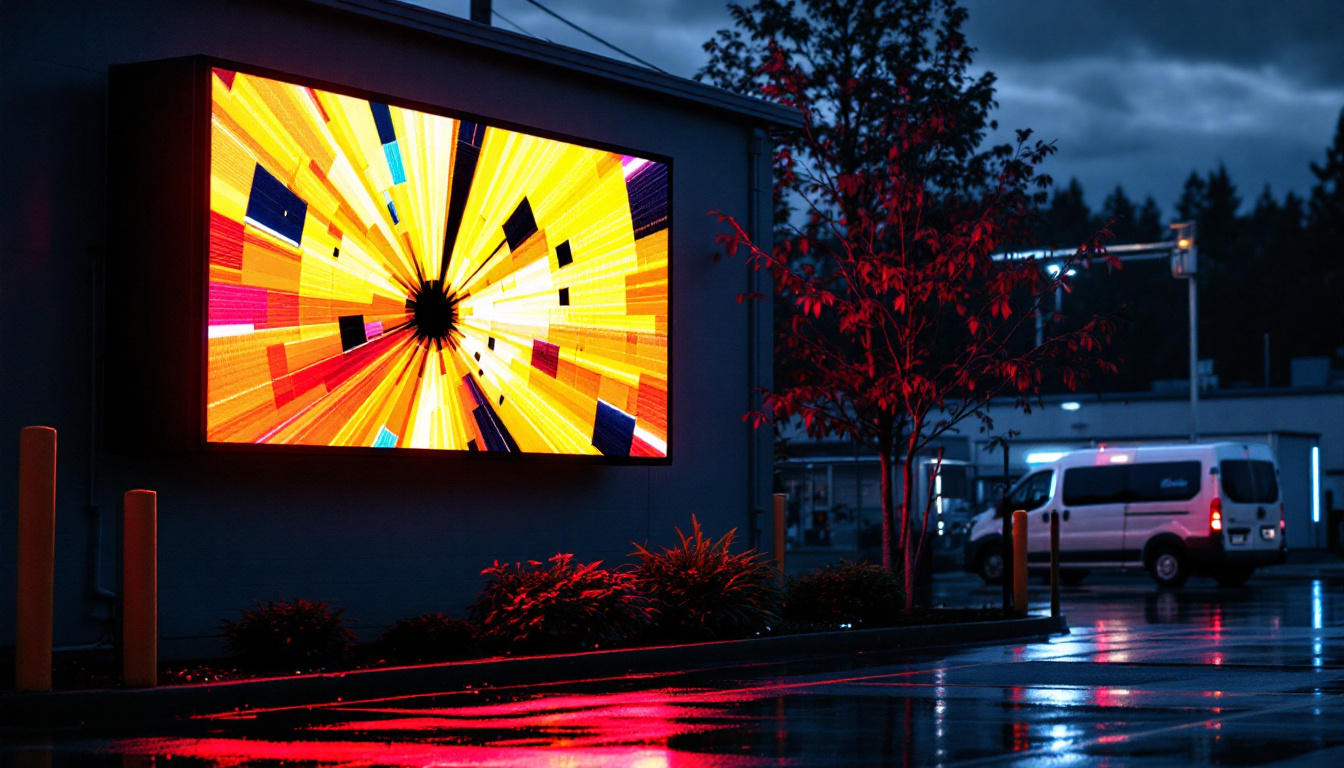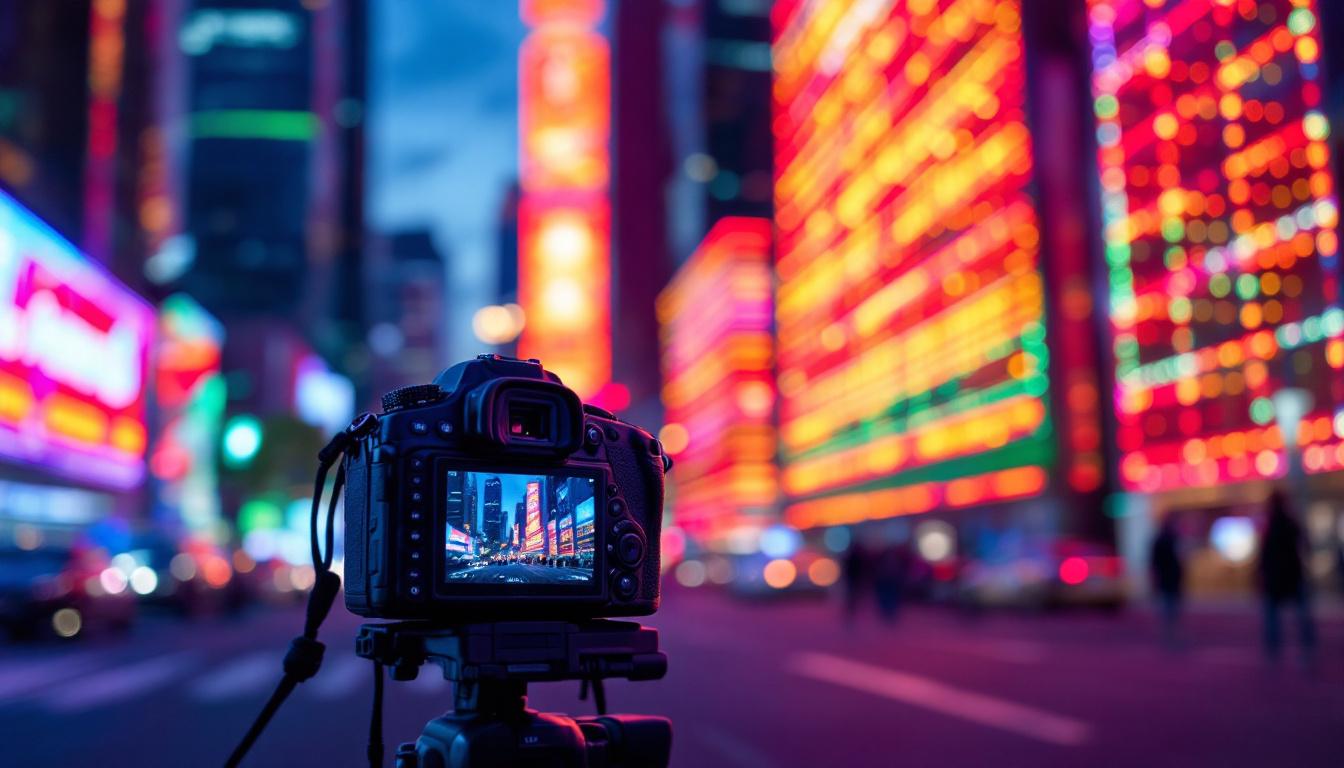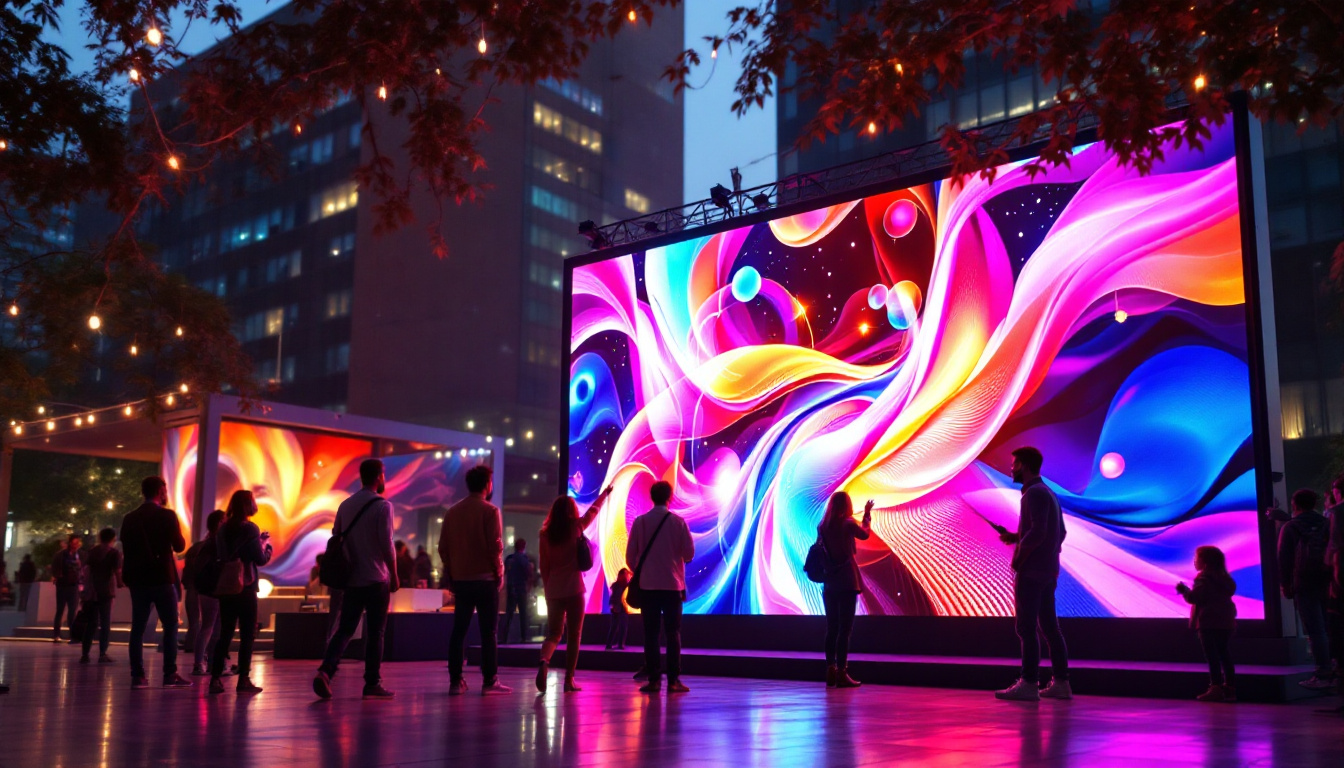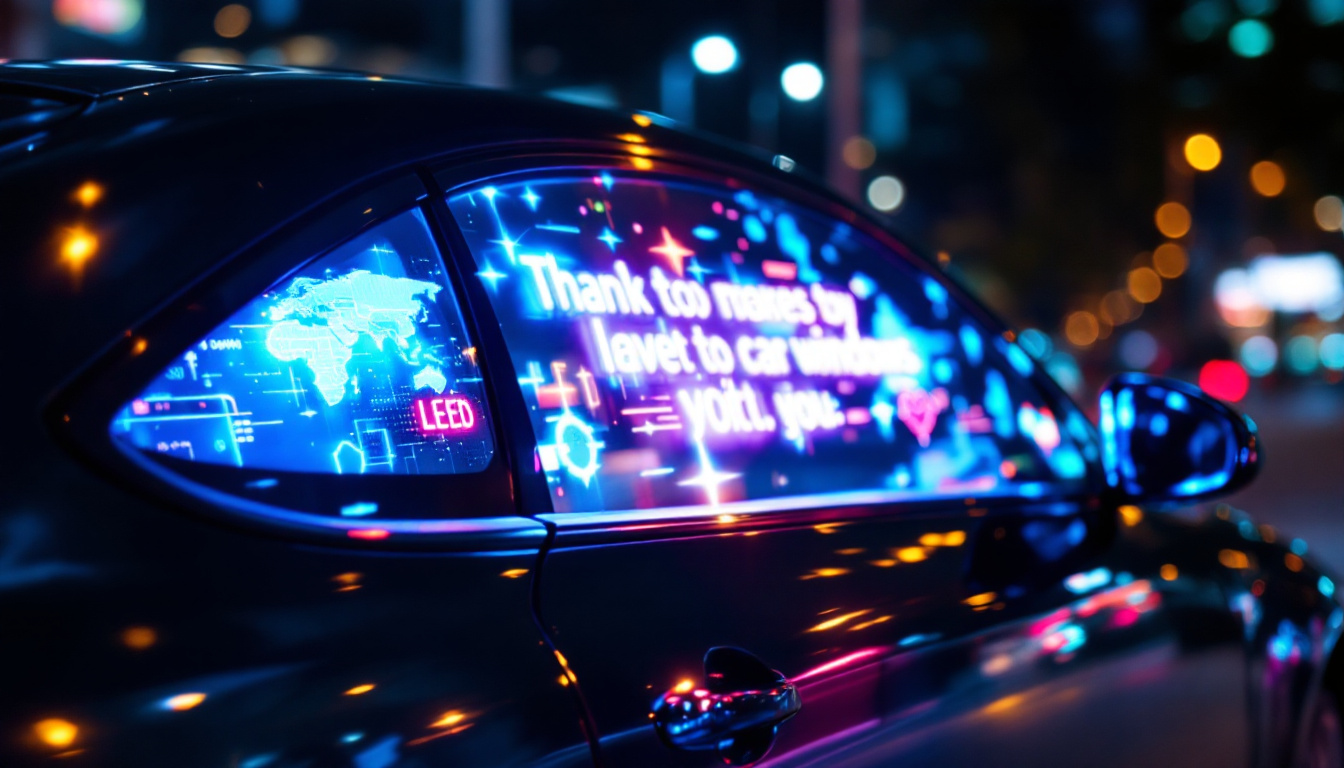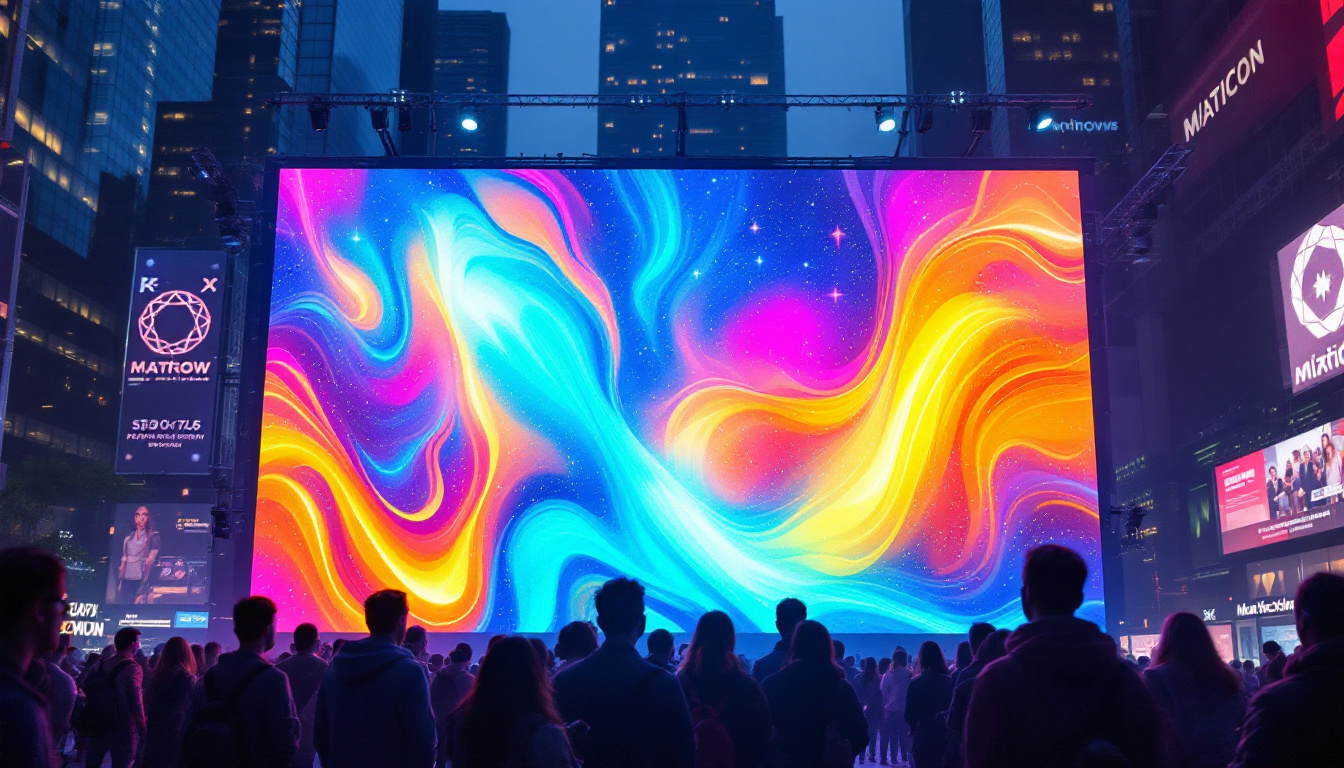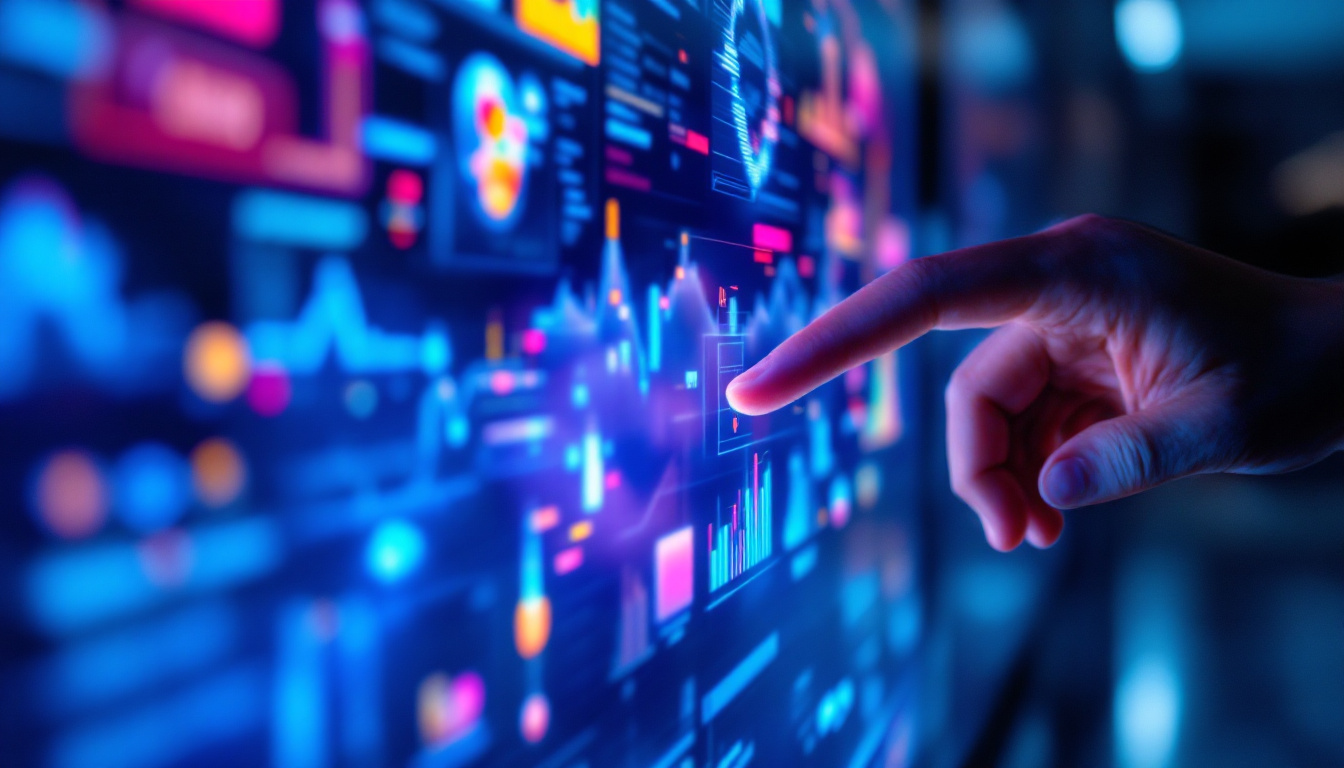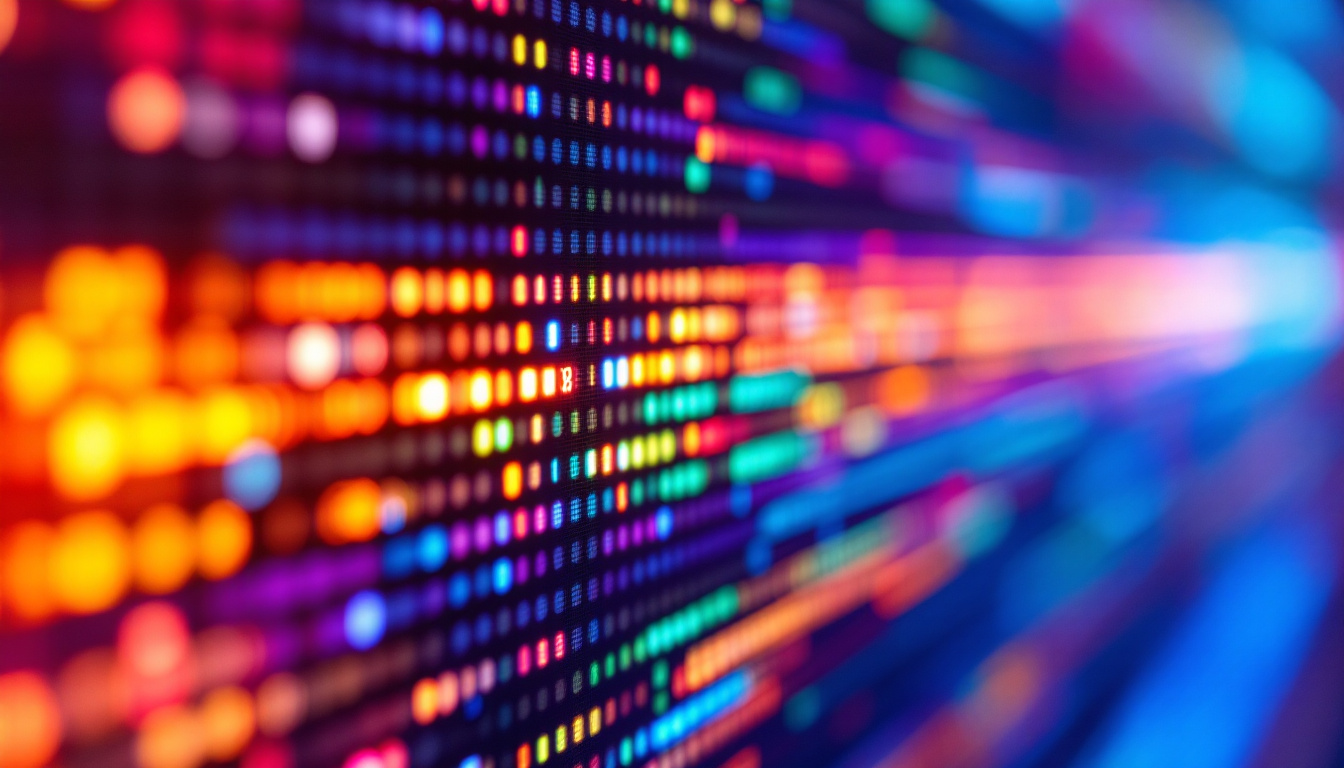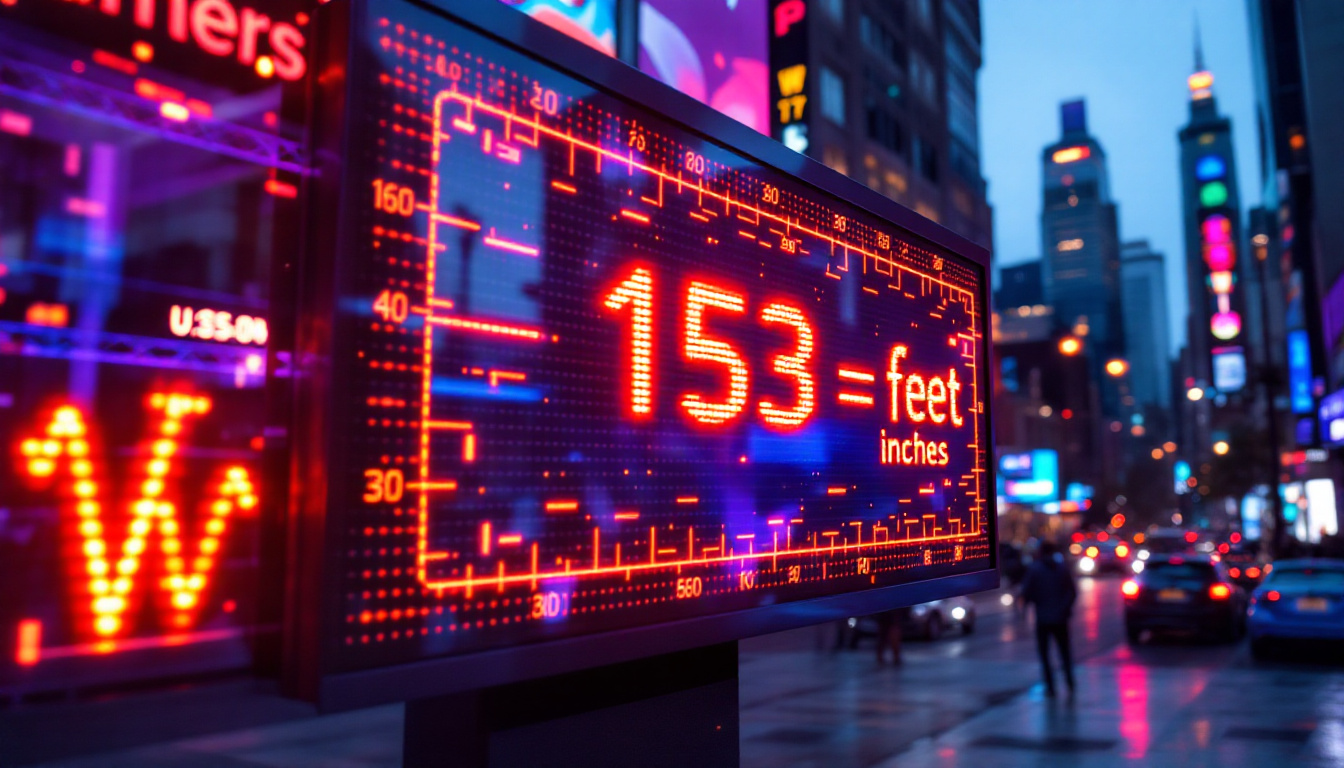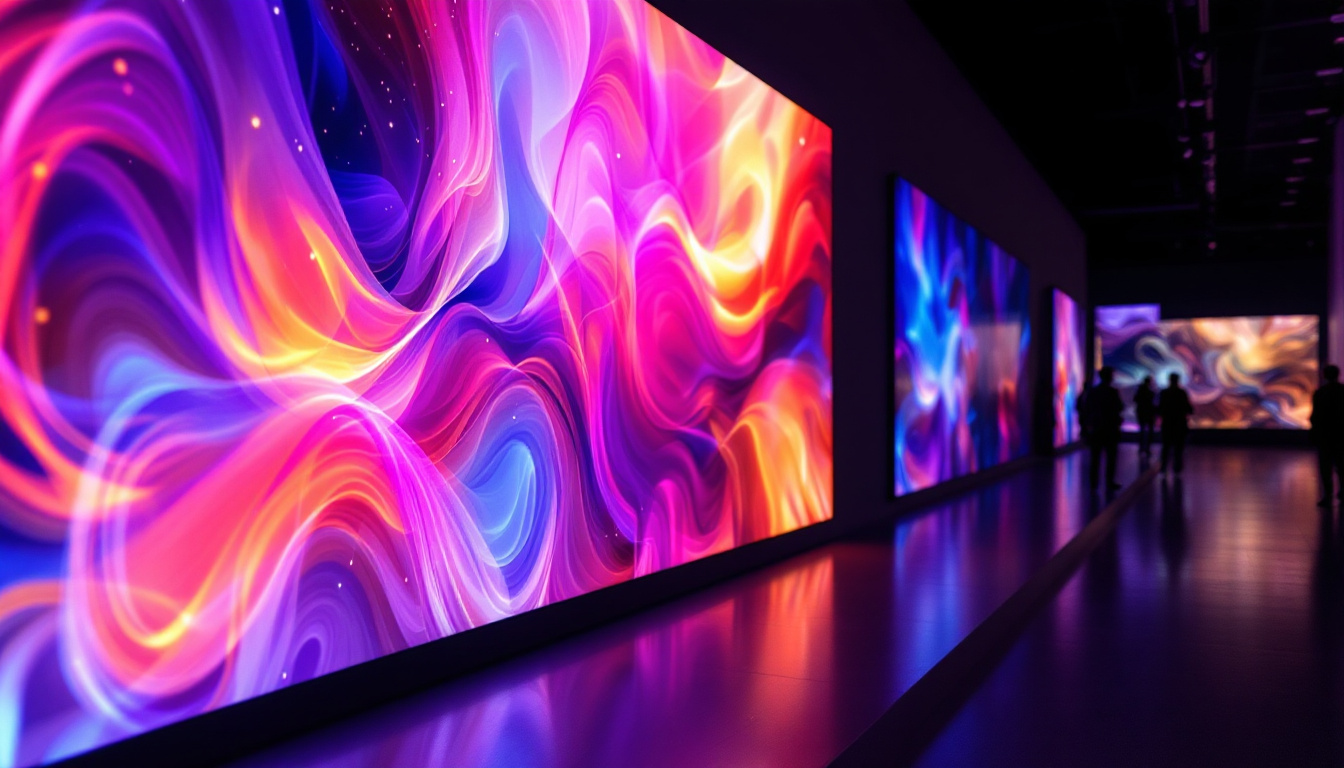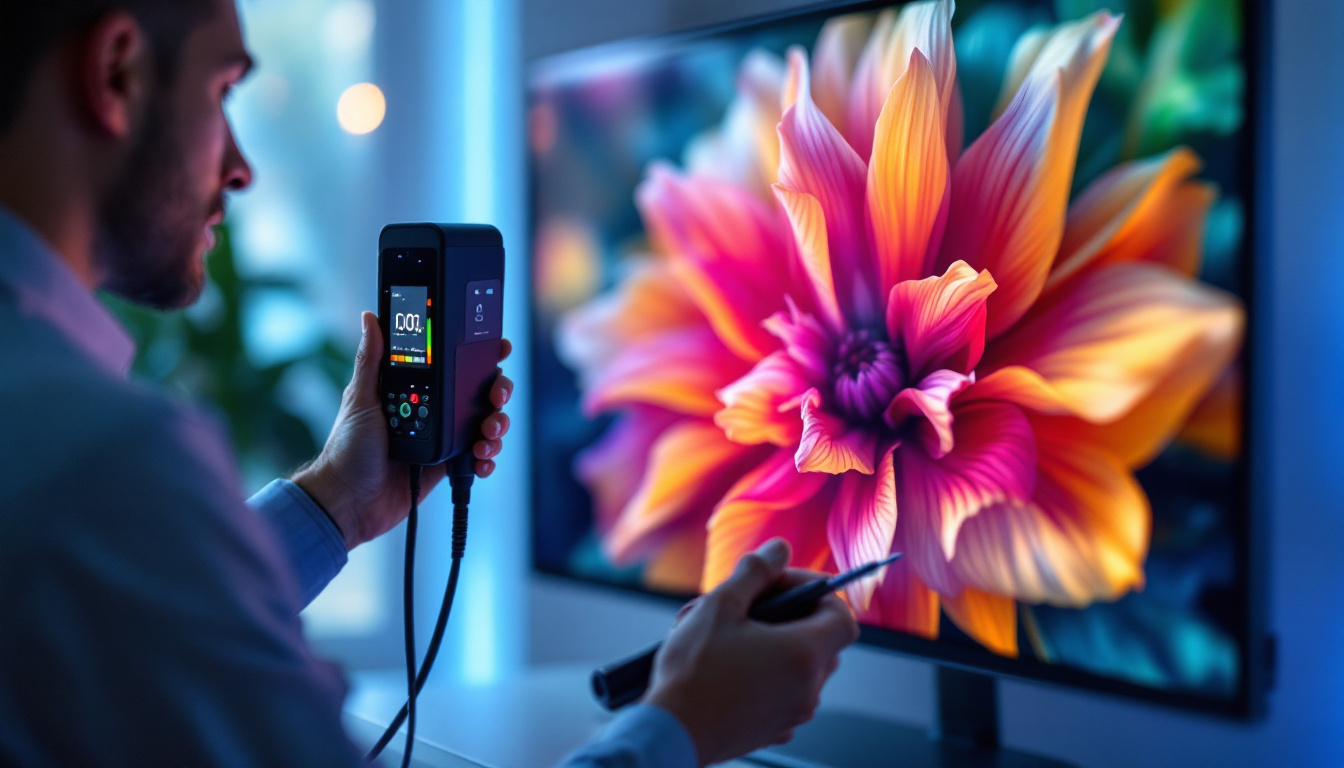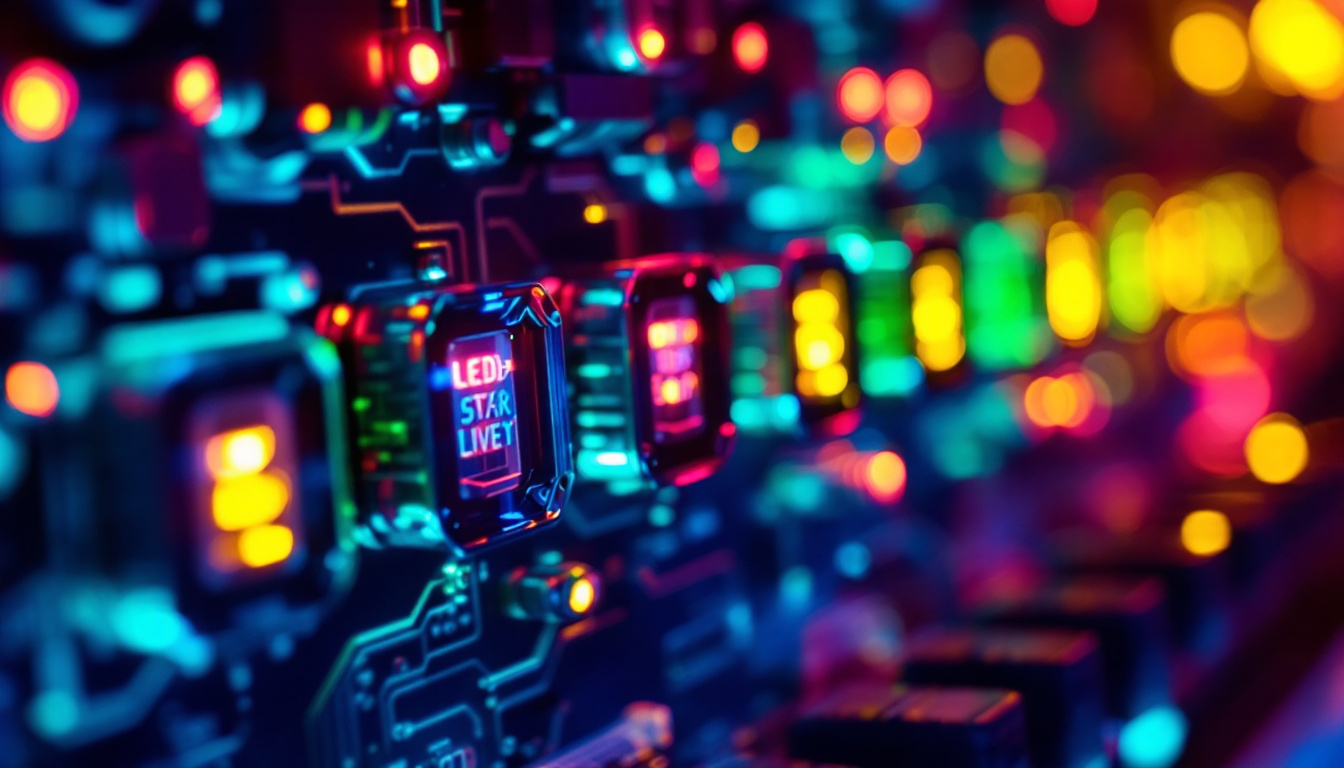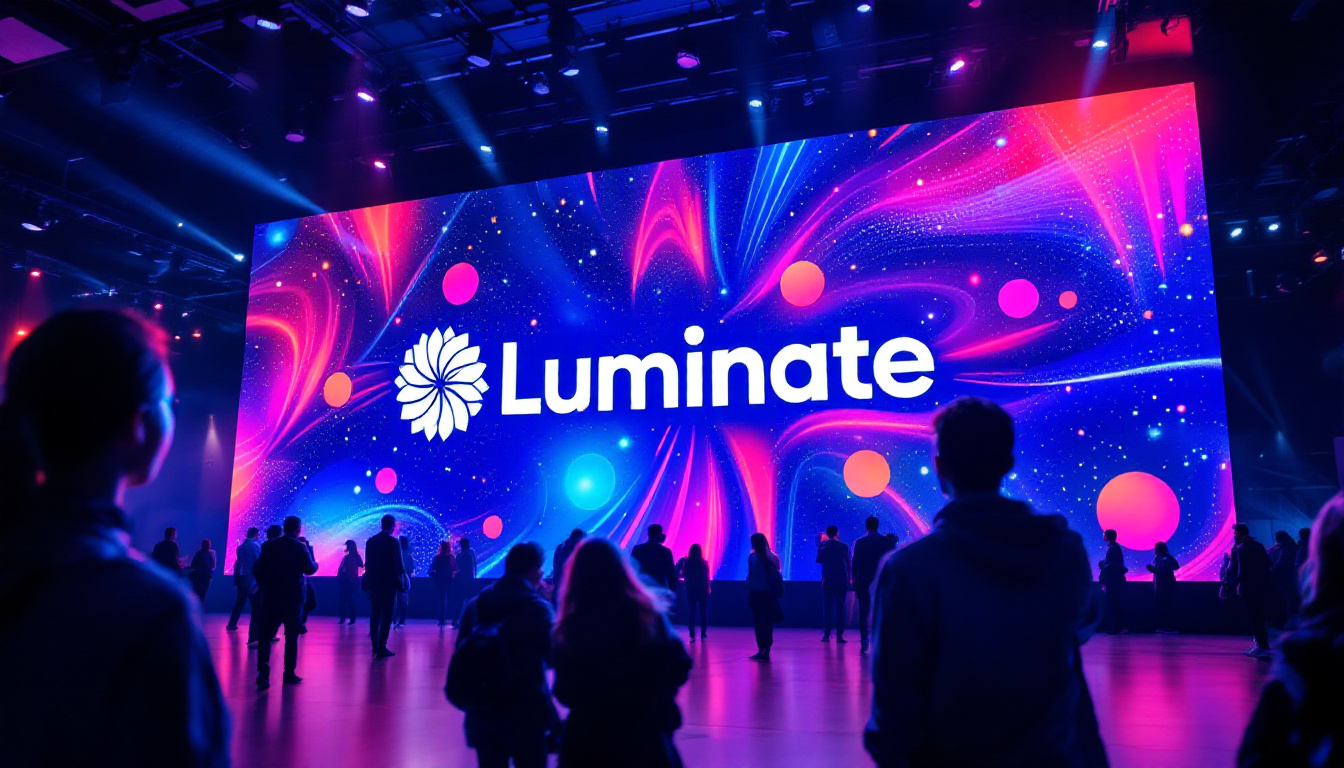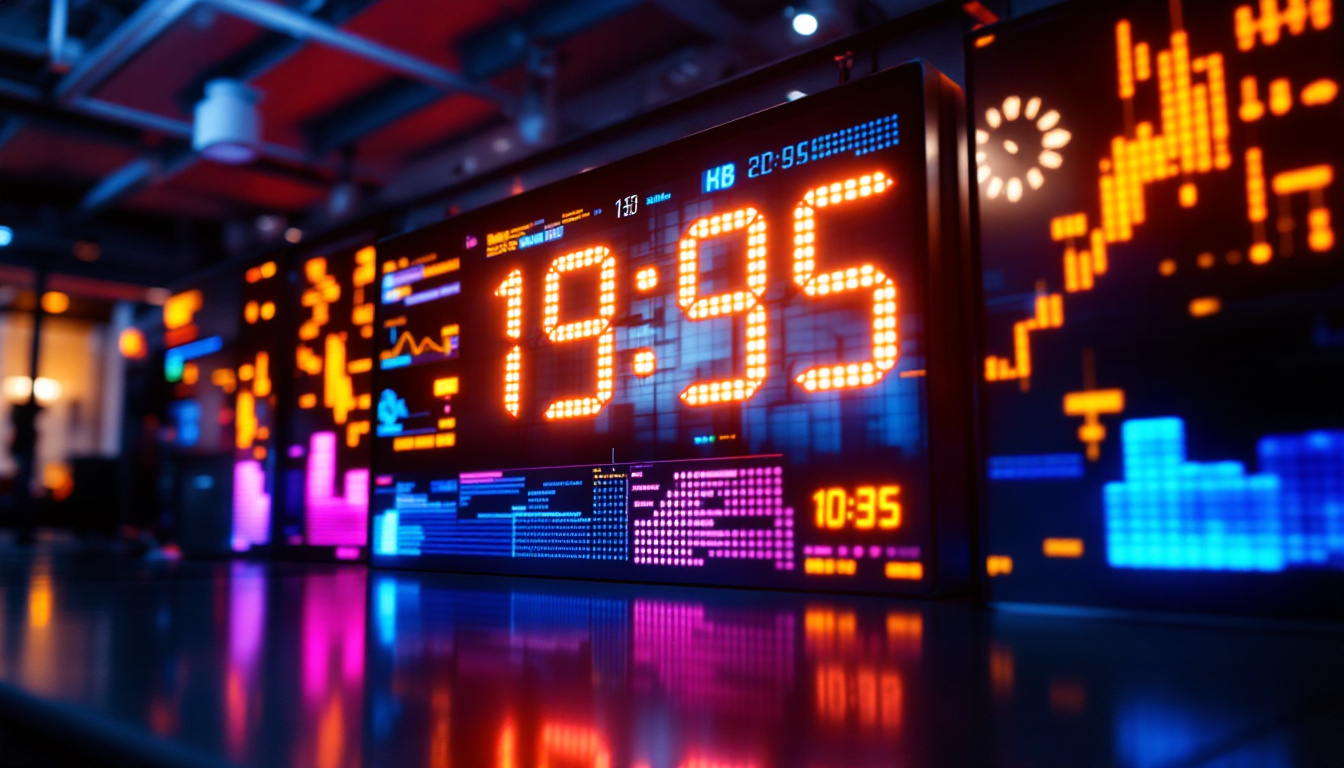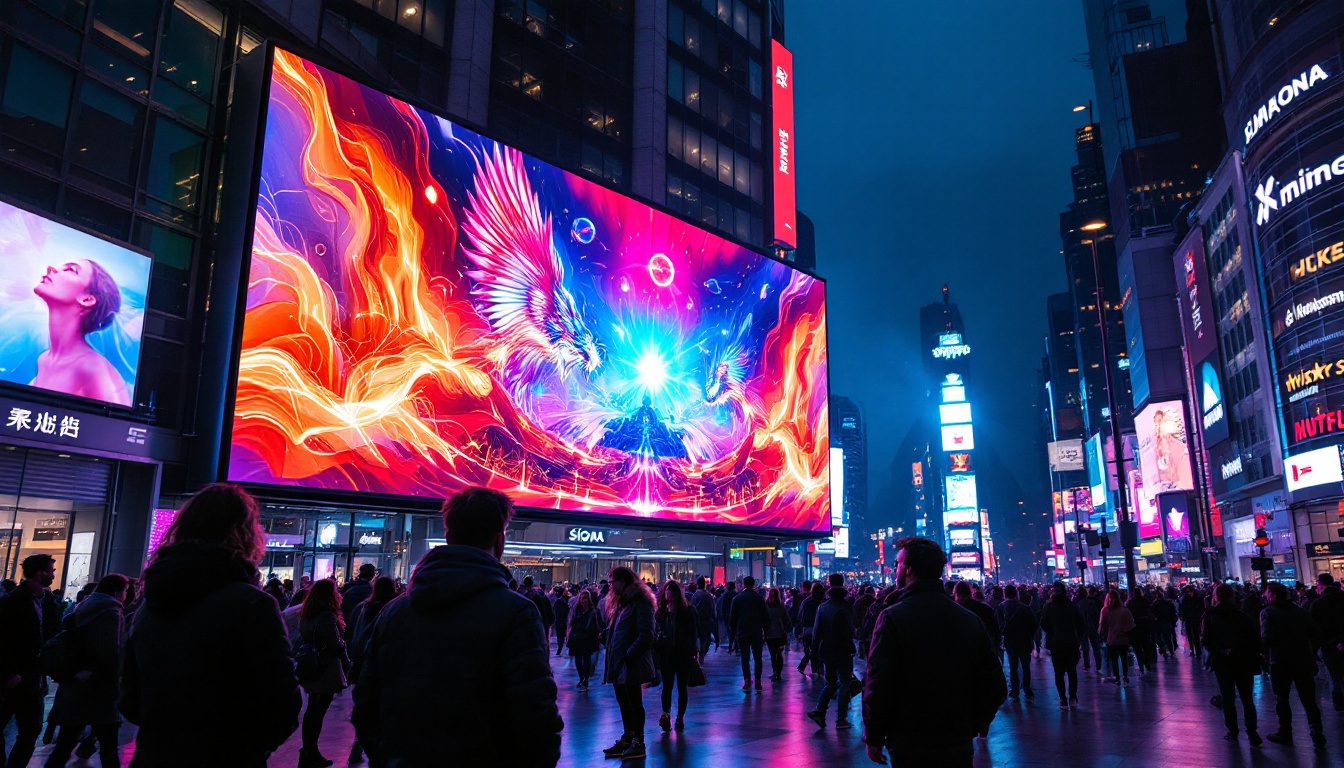In the realm of modern technology, programmable screens have emerged as a transformative force, particularly in the form of LED displays. These versatile screens are not just tools for displaying information; they have become integral to advertising, entertainment, and communication. This article delves into the intricacies of programmable LED displays, exploring their functionality, applications, and the technology that powers them.
Understanding LED Technology
What is LED?
Light Emitting Diode (LED) technology is a semiconductor light source that emits light when an electric current passes through it. LEDs are known for their efficiency, longevity, and versatility. Unlike traditional incandescent bulbs, which work by heating a filament, LEDs produce light through electroluminescence, making them significantly more energy-efficient. This efficiency translates not only into lower energy bills for consumers but also into a reduced carbon footprint, making LEDs an environmentally friendly lighting option.
The compact size of LEDs allows for innovative designs in display technology, enabling the creation of screens that can be both large and flexible. This adaptability has led to their widespread use in various applications, from small displays in electronic devices to massive billboards in urban landscapes. Furthermore, advancements in LED technology have paved the way for smart lighting solutions, where LEDs can be integrated into smart home systems, allowing users to control lighting remotely or set schedules for energy savings.
How LED Displays Work
LED displays consist of an array of tiny LED lights arranged in a grid. Each LED can be controlled individually, allowing for the creation of dynamic images and animations. The basic components of an LED display include:
- Pixel: The smallest unit of a display, typically made up of red, green, and blue (RGB) LEDs that combine to create a wide range of colors.
- Controller: A device that manages the signals sent to the LEDs, determining which lights to activate and when.
- Power Supply: Provides the necessary energy to the LEDs, ensuring they operate efficiently and effectively.
When a signal is sent to the display, the controller activates specific LEDs based on the desired image or message. The rapid switching of these lights creates the illusion of motion and color, allowing for vibrant and engaging displays. This technology is not only used in televisions and computer monitors but has also found applications in outdoor advertising, sports arenas, and even art installations, where it can transform spaces and captivate audiences. The ability to create high-resolution images with brightness levels that can be adjusted for different lighting conditions further enhances the versatility of LED displays, making them suitable for both indoor and outdoor environments.
Applications of Programmable LED Displays
Advertising and Marketing
One of the most prominent applications of programmable LED displays is in advertising. Businesses utilize these screens to showcase their products, promotions, and brand messages in a visually striking manner. The ability to change content quickly and remotely makes LED displays an attractive option for marketers.
Digital billboards, for example, can rotate multiple advertisements throughout the day, maximizing exposure and engagement. This flexibility allows businesses to target specific demographics based on time, location, and even current events, making their advertising efforts more effective. Moreover, the integration of interactive elements, such as QR codes or social media feeds, can further enhance engagement, allowing consumers to connect with brands in real-time. This interactive capability not only captures attention but also fosters a sense of community and participation among viewers, making advertisements more memorable.
Events and Entertainment
In the entertainment industry, programmable LED displays play a crucial role in enhancing the audience experience. Concerts, festivals, and sporting events often feature large LED screens that display live feeds, graphics, and animations, creating an immersive atmosphere.
Moreover, event organizers can use these screens to convey real-time information, such as schedules, directions, and safety announcements. The dynamic nature of LED displays allows for creative visual storytelling, captivating audiences and enhancing overall engagement. Beyond just visuals, LED displays can also synchronize with sound systems to create a cohesive sensory experience, where lighting and sound work in harmony to elevate performances. This synergy can transform a simple event into an unforgettable spectacle, leaving lasting impressions on attendees and encouraging them to return for future events.
Public Information and Transportation
Programmable LED displays are also widely used in public information systems. From train stations to airports, these screens provide travelers with essential updates, such as arrival and departure times, gate information, and service alerts. The clarity and visibility of LED displays ensure that information is easily accessible, even in crowded environments.
Additionally, cities are increasingly adopting LED displays for traffic management. Variable message signs (VMS) can inform drivers about road conditions, accidents, or detours, improving safety and traffic flow. These displays can also be programmed to provide real-time updates on public transport schedules, helping commuters plan their journeys more efficiently. Furthermore, the use of LED technology in public spaces can contribute to smart city initiatives, where data is collected and analyzed to optimize urban infrastructure. By integrating LED displays with other smart technologies, cities can enhance communication with residents and visitors, creating a more informed and connected community.
Benefits of Programmable LED Displays
Energy Efficiency
One of the standout benefits of LED technology is its energy efficiency. LED displays consume significantly less power compared to traditional display technologies, such as LCD or plasma screens. This not only reduces operational costs but also contributes to a lower carbon footprint, making LED displays an environmentally friendly option.
Furthermore, advancements in LED technology have led to improved brightness and visibility, allowing these displays to be used effectively in various lighting conditions, from bright sunlight to dimly lit environments.
Longevity and Durability
LED displays are built to last. With a lifespan often exceeding 50,000 hours, they require less frequent replacements than other display technologies. This longevity translates to lower maintenance costs and reduced waste, further enhancing their appeal.
Additionally, LED displays are designed to withstand harsh weather conditions, making them suitable for both indoor and outdoor applications. Their durability ensures that they can operate effectively in a variety of environments, from bustling city streets to remote locations.
Customization and Flexibility
The programmable nature of LED displays allows for unparalleled customization. Businesses can easily change content, colors, and animations to suit their needs, ensuring that their messaging remains fresh and relevant. This flexibility is particularly advantageous for businesses that frequently update promotions or events.
Moreover, the modular design of many LED displays allows for various configurations, enabling the creation of unique shapes and sizes. This adaptability opens up endless possibilities for creative installations, whether in retail spaces, art exhibitions, or public installations.
Challenges and Considerations
Initial Investment
While the long-term benefits of programmable LED displays are substantial, the initial investment can be a barrier for some businesses. The cost of purchasing and installing LED technology can be higher than traditional display options. However, it is essential to consider the return on investment (ROI) over time, as energy savings and reduced maintenance costs can offset the initial expenditure.
Many businesses find that the enhanced visibility and engagement provided by LED displays lead to increased sales and customer interaction, ultimately justifying the upfront costs.
Content Management
Another challenge associated with programmable LED displays is content management. To maximize the effectiveness of these displays, businesses must develop engaging and relevant content that captures the audience’s attention. This requires a strategic approach to content creation, as well as the necessary software and tools to manage and schedule updates.
Investing in skilled personnel or training existing staff in content management can help address this challenge, ensuring that the display remains a valuable asset rather than a static piece of technology.
Regulatory Compliance
In many regions, the use of programmable LED displays is subject to regulations regarding brightness, placement, and content. Businesses must be aware of these regulations to avoid fines or penalties. Understanding local laws and working with regulatory bodies can help ensure compliance and smooth operation.
Additionally, businesses should consider the impact of their displays on the surrounding environment, ensuring that their use of LED technology enhances rather than detracts from the community.
The Future of Programmable LED Displays
Advancements in Technology
The future of programmable LED displays looks promising, with ongoing advancements in technology. Innovations such as organic LEDs (OLEDs) and microLEDs are paving the way for even more efficient and versatile displays. These technologies offer improved color accuracy, contrast, and flexibility, allowing for new applications and designs.
As technology continues to evolve, the potential for interactive and immersive displays is expanding. Future LED displays may incorporate augmented reality (AR) and virtual reality (VR) elements, creating engaging experiences that blur the lines between the digital and physical worlds.
Integration with Smart Technology
As smart technology becomes increasingly prevalent, the integration of programmable LED displays with smart systems is likely to grow. This could include features such as real-time data integration, automated content updates based on environmental conditions, and enhanced interactivity through mobile devices.
Businesses that embrace these advancements will be better positioned to leverage the full potential of programmable LED displays, creating dynamic and responsive environments that engage customers in new ways.
Sustainability Initiatives
As environmental concerns continue to rise, the demand for sustainable technology is more significant than ever. Programmable LED displays are already recognized for their energy efficiency, but future developments may focus on further reducing their environmental impact.
Recycling programs for LED components, sustainable manufacturing practices, and the use of eco-friendly materials are likely to become more common. Businesses that prioritize sustainability in their use of LED technology will not only contribute to environmental preservation but also resonate with increasingly eco-conscious consumers.
Conclusion
Programmable LED displays have revolutionized the way information is conveyed and experiences are created. Their versatility, energy efficiency, and dynamic capabilities make them an invaluable tool for businesses across various sectors. As technology continues to advance, the potential applications and benefits of LED displays will only expand.
While challenges such as initial investment and content management exist, the long-term advantages of programmable LED displays far outweigh these considerations. With a focus on innovation, sustainability, and smart integration, the future of programmable screens is bright, paving the way for new opportunities in communication and engagement.
Illuminate Your Message with LumenMatrix
Ready to elevate your brand’s presence and captivate your audience with unparalleled visual experiences? LumenMatrix is at the forefront of LED display innovation, offering a comprehensive range of solutions tailored to your unique needs. From Indoor and Outdoor LED Wall Displays to specialized options like Vehicle, Sports, and Floor LED Displays, our mission is to revolutionize your visual communication. Discover the transformative power of our Custom, All-in-One, and Transparent LED Displays. Check out LumenMatrix LED Display Solutions today and let your message shine with clarity and impact.

